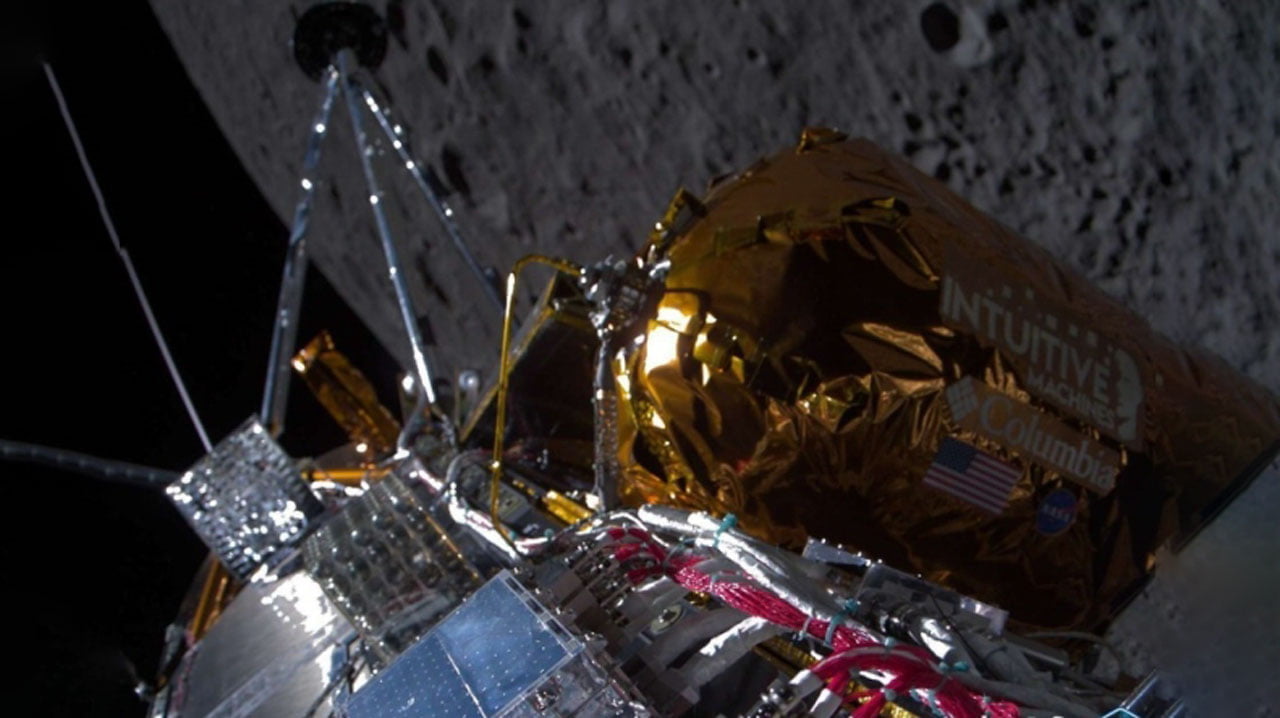The First Successful Lunar Lander Odysseus In The US NASA Goes To Mars With ‘Cost-Effective’ Strategy

The unmanned lunar lander Odysseus, manufactured by American aerospace company Intuitive Machines, descended from lunar orbit on the morning of the 23rd Korean time and landed on the surface near the lunar south pole. The company, which succeeded in communicating with Odysseus, is currently waiting for before and after landing photos from Odysseus. As soon as the exact location and condition are confirmed, we plan to explore the lunar surface over the next seven days.
The Odysseus moon landing was not only the first civilian, but also a feat achieved in the United States 52 years after NASA’s lunar exploration program Apollo. There is an interpretation that the leadership of the US space industry, which began as a system competition with the Soviet Union during the Cold War, was transferred from state agencies such as NASA to private companies due to ‘cost-effectiveness’.
The operation ‘IM-1’ to send Odysseus to the moon was promoted as part of NASA’s ‘Commercial Lunar Transport Service’ (CLPS). NASA, which established the Moon-Mars exploration program ‘Artemis’ in 2017, has the goal of completing manned lunar exploration in 2026 and then challenging Mars exploration based on this. To minimize the costs incurred in this process, NASA designed CLPS and won equipment delivery contracts to nine domestic private companies in 2018 and five the following year.
The first CLPS was the unmanned lunar lander ‘Peregrine’ built by American space robot developer Astrobotic. On the 8th of last month, Peregrine was launched from NASA’s Kennedy Space Station in Cape Canaveral, Florida, but failed to land on the moon due to a defect in the solar panel 7 hours after launch. Accordingly, Odysseus took over the CLPS baton, and six weeks later, on the 15th, it was launched from the same space center and landed successfully that day.
It may be a modest achievement compared to NASA sending astronauts to the moon six times through the Apollo program half a century ago, when computers were not even common. Nevertheless, if NASA subcontracts delivery work to a domestic company through CLPS instead of taking the lead in space development, exploration costs can be reduced by one-tenth. With CLPS, NASA only pays a set down payment and does not have to incur additional costs even if they incur additional costs during the research and development process.
Steven Altemus, CEO of Intuitive Machines, said in an interview with CNN the previous day regarding the Odysseus lunar exploration, “What would have cost at least $1 billion in the past is being accomplished in the $100 million range.” In fact, the money NASA gave to Intuitive Machines through CLPS was $118 million (about 150 billion won). Even with all 14 CLPS participating companies, NASA’s spending was only $2.6 billion (approximately 3.3 trillion won).
The first stage of the Artemis program was an unmanned flight into lunar orbit, with Orion returning safely in December 2022. The second stage is a manned flight into lunar orbit. To this end, starting with Odysseus, five companies participating in CLPS will send eight unmanned lunar landers by next year. The third stage is a manned lunar landing, scheduled for 2026. NASA’s plan is to build a sustainable outpost on the lunar surface that will be used for manned exploration of Mars within the next 10 years.
If it is finally confirmed that there are no problems with the Odysseus fuselage on this day, the lander will travel near the lunar south pole, which was the landing site, for the next seven days and closely examine the lunar terrain, resources, and potential risks. In particular, it is believed that there is ice at the lunar south pole, and NASA plans to use this ice as drinking water for astronauts and spacecraft fuel in the future.
However, some point out that because NASA is not leading the overall Artemis program, the project may not be moving at its own pace. Reuters, which reported on Odysseus’ landing process that day, pointed out that when communication problems arose, “relying on small, inexperienced private venture companies carries risks in itself.” Initially, the second phase of the Artemis program was scheduled to begin this year and the third phase next year, but due to delays in companies’ research and development of unmanned lunar landers, NASA postponed each phase by one year on the 9th of last month.
See More:
New York Stock Market Started Higher On Nvidia’s 15% Surge
Iran Provides 400 Ballistic Missiles To Russia, Concerns About Damage To Ukraine
‘Apple’s Shadow’ Cast Over the Faltering Foldable Phone Market in 2024
Foldable Smartphone Shipments Market Growth Slows To 11% This Year
Leave a Comment